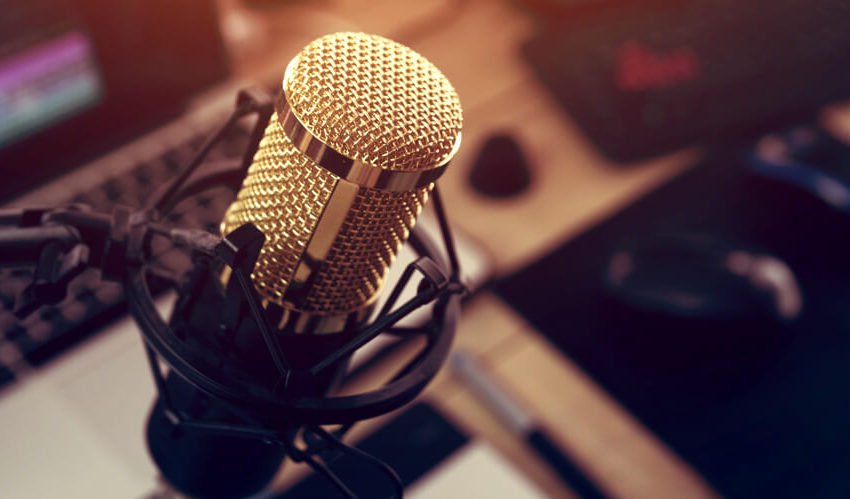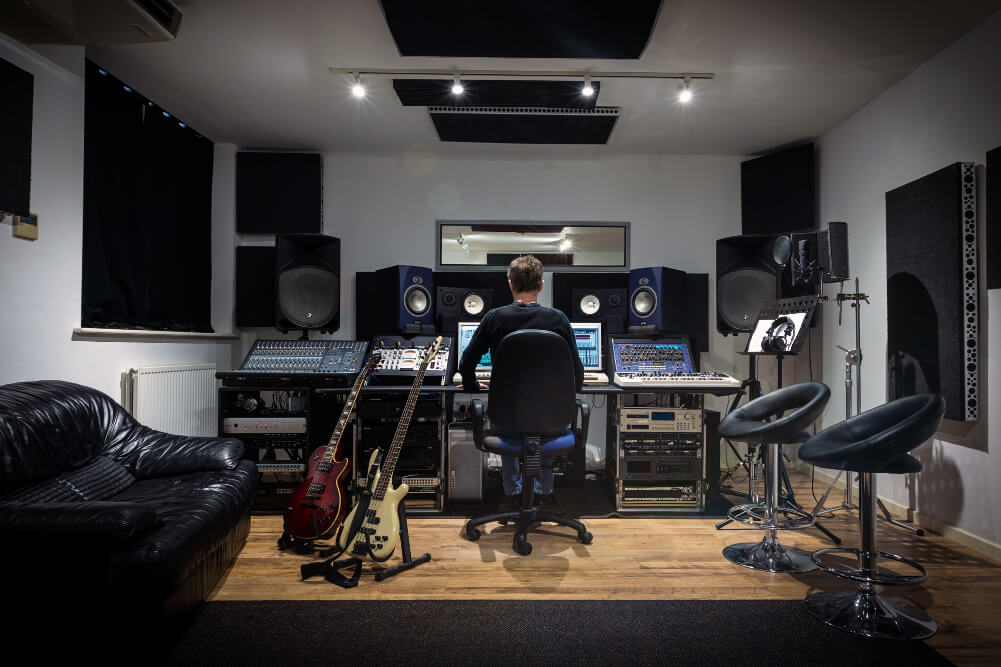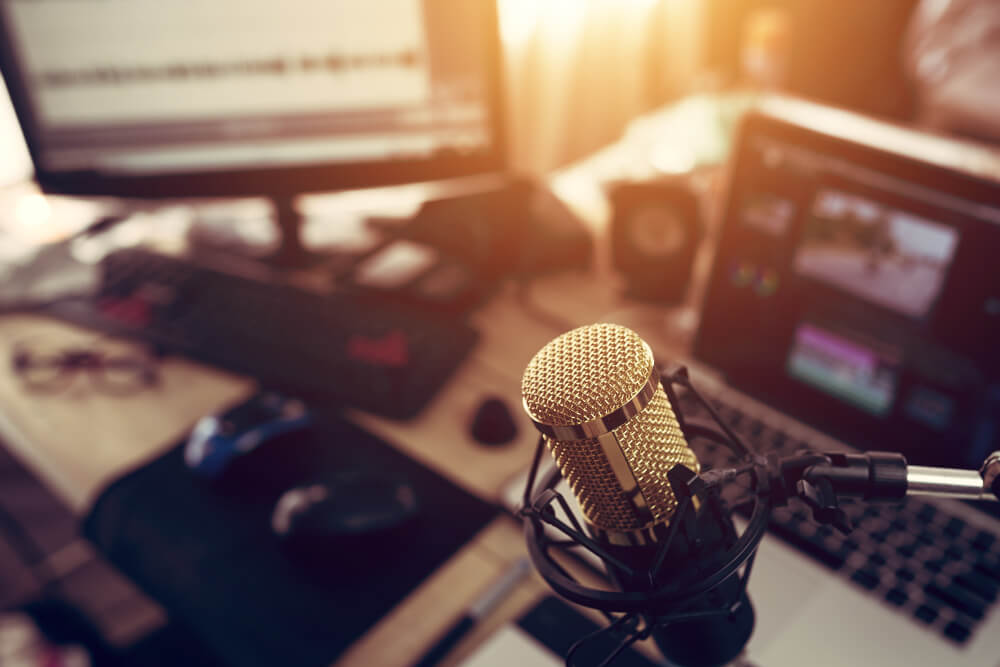Things To Consider When Choosing A Mic For Your Home Studio
The choice of a microphone is one of the key factors that’ll determine the quality of your audio production. With more people working within a home studio, it’s important to know the right microphone to select.
However, there are several decisions to make when choosing the best microphone for your home studio, including the following:
1. Microphone Type
Three common microphones can be used in your home studio: condenser, dynamic, and ribbon types. The choice of a microphone type should be based on personal preference.
To help you decide, here’s the difference between the three types of microphone:
Condenser Microphones: This microphone consists of a suspended diaphragm in a capsule that moves when sound frequencies hit it. They’re very sensitive to sound and produces the best sound quality compared to dynamic and ribbon microphones.
Dynamic Microphones: These aren’t as sensitive as condenser mics, hence they’re suitable for home studios. They’re more durable than both condenser and ribbon mics. However, the sounds from dynamic microphones are not as good compared with condenser microphones.
Ribbon Microphones: These feature a metal sheet that receives sound waves and transmits them as electrical current. Of all three options, it’s the oldest type of microphone and is great for vintage sound productions. They require a high-quality audio interface to boost the sound and increase the quality. This type of microphone is also fragile.
2. Polar Pattern
Polar patterns, also known as the pickup pattern, refers to the direction that a microphone can capture. There are three basic types of polar patterns: cardioid, bi-directional, and omnidirectional.
Cardioids can capture sounds that are directly in front of the mic. They’re not able to pick sounds from the sides and the back of the microphone. Hence, they’re great for blocking away ambient sounds, such as laptop fan hums in a home studio.
Bi-directional mics capture sounds from the front and back of the mic, while omnidirectional ones capture sounds from all directions, making them least effective in a home studio because of their ability to capture both the primary and ambient sounds.
Putting this into consideration while selecting your microphone will determine the quality of sound you’ll get.
3. Frequency Response Range and Response Curves
All microphones have a frequency response range, which defines the microphone’s ability to respond to frequency changes. They’re measured in cycle per second or Hertz, which vary from low to high frequencies. The range determines how your microphone will capture varying frequencies, including low, medium, and high frequencies.
A frequency range between 50Hz to 15KHz is satisfactory for a home studio. However, it’s important to note that there are instruments, such as bass drums, that require as low as 30Hz starting frequencies. The variation of the microphone in Decibels should also be visible in the frequency response range, such as 50Hz – 15KHz ± 3dB
The frequency response curve is a closely related factor to the frequency response range. It’s found in all professional microphones and depicts mic performance in response to varying sound frequencies. The curve is generated by plotting the frequency value in Hertz against the sound variation in decibels. The ideal frequency response curve should exhibit a spike with the mid-range, which shows a good response to vocals.
4. Sensitivity and SPL Handling
The sensitivity of a mic determines how quiet a sound it can pick. Hence, a mic that possesses less sensitivity will need higher pre-amplification to have a satisfactory output. The resulting audio quality is reduced in the absence of a preamp as you might expect in a home studio.
In contrast, the Sound Pressure Level (SPL) handling of a mic refers to the maximum volume a mic can handle. It’s measured in decibel (dB), and a value above 100 dB is satisfactory for a home studio mic.
5. Your Budget
Lastly, you should consider your budget before proceeding to buy a microphone. Amongst the three mic types, condenser mics are the cheapest, while the ribbon microphone is the most expensive.
Both low and high-cost mics can produce quality sounds. This is because it’s more about the microphone specs than the price. However, a budget helps you limit the amount you’re expending on a microphone as there are other things to invest in when having a home studio.
Conclusion:
An important factor to consider when choosing a microphone is the microphone type. In terms of audio production, polar patterns, frequency response ranges, frequency response curves, sensitivity, and SPL handling of the microphone should be considered. Your budget is the ultimate determining factor when selecting a mic for your home studio.
Things To Consider When Choosing A Mic For Your Home Studio
By thereviewsarein
The choice of a microphone is one of the key factors that’ll determine the quality of your audio production. With more people working within a home studio, it’s important to know the right microphone to select.
However, there are several decisions to make when choosing the best microphone for your home studio, including the following:
1. Microphone Type
Three common microphones can be used in your home studio: condenser, dynamic, and ribbon types. The choice of a microphone type should be based on personal preference.
To help you decide, here’s the difference between the three types of microphone:
Condenser Microphones: This microphone consists of a suspended diaphragm in a capsule that moves when sound frequencies hit it. They’re very sensitive to sound and produces the best sound quality compared to dynamic and ribbon microphones.
Dynamic Microphones: These aren’t as sensitive as condenser mics, hence they’re suitable for home studios. They’re more durable than both condenser and ribbon mics. However, the sounds from dynamic microphones are not as good compared with condenser microphones.
Ribbon Microphones: These feature a metal sheet that receives sound waves and transmits them as electrical current. Of all three options, it’s the oldest type of microphone and is great for vintage sound productions. They require a high-quality audio interface to boost the sound and increase the quality. This type of microphone is also fragile.
2. Polar Pattern
Polar patterns, also known as the pickup pattern, refers to the direction that a microphone can capture. There are three basic types of polar patterns: cardioid, bi-directional, and omnidirectional.
Cardioids can capture sounds that are directly in front of the mic. They’re not able to pick sounds from the sides and the back of the microphone. Hence, they’re great for blocking away ambient sounds, such as laptop fan hums in a home studio.
Bi-directional mics capture sounds from the front and back of the mic, while omnidirectional ones capture sounds from all directions, making them least effective in a home studio because of their ability to capture both the primary and ambient sounds.
Putting this into consideration while selecting your microphone will determine the quality of sound you’ll get.
3. Frequency Response Range and Response Curves
All microphones have a frequency response range, which defines the microphone’s ability to respond to frequency changes. They’re measured in cycle per second or Hertz, which vary from low to high frequencies. The range determines how your microphone will capture varying frequencies, including low, medium, and high frequencies.
A frequency range between 50Hz to 15KHz is satisfactory for a home studio. However, it’s important to note that there are instruments, such as bass drums, that require as low as 30Hz starting frequencies. The variation of the microphone in Decibels should also be visible in the frequency response range, such as 50Hz – 15KHz ± 3dB
The frequency response curve is a closely related factor to the frequency response range. It’s found in all professional microphones and depicts mic performance in response to varying sound frequencies. The curve is generated by plotting the frequency value in Hertz against the sound variation in decibels. The ideal frequency response curve should exhibit a spike with the mid-range, which shows a good response to vocals.
4. Sensitivity and SPL Handling
The sensitivity of a mic determines how quiet a sound it can pick. Hence, a mic that possesses less sensitivity will need higher pre-amplification to have a satisfactory output. The resulting audio quality is reduced in the absence of a preamp as you might expect in a home studio.
In contrast, the Sound Pressure Level (SPL) handling of a mic refers to the maximum volume a mic can handle. It’s measured in decibel (dB), and a value above 100 dB is satisfactory for a home studio mic.
5. Your Budget
Lastly, you should consider your budget before proceeding to buy a microphone. Amongst the three mic types, condenser mics are the cheapest, while the ribbon microphone is the most expensive.
Both low and high-cost mics can produce quality sounds. This is because it’s more about the microphone specs than the price. However, a budget helps you limit the amount you’re expending on a microphone as there are other things to invest in when having a home studio.
Conclusion:
An important factor to consider when choosing a microphone is the microphone type. In terms of audio production, polar patterns, frequency response ranges, frequency response curves, sensitivity, and SPL handling of the microphone should be considered. Your budget is the ultimate determining factor when selecting a mic for your home studio.





















One comment on “Things To Consider When Choosing A Mic For Your Home Studio”